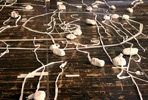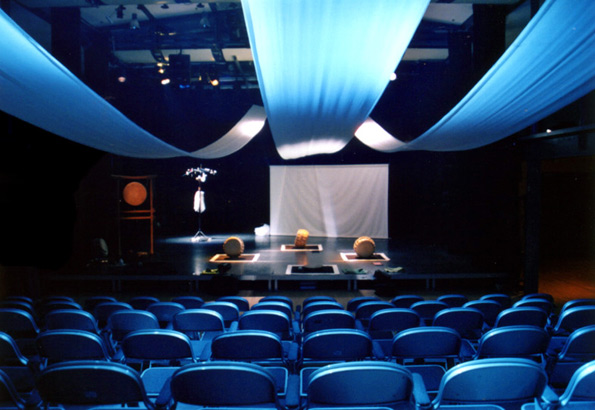
- Share:
- Google Plus
'Salpuri' ... etymology
as one has to reinvent oneself by breaking with outdated worldviews.
S a l p u r i
The word "Salpuri" derives from the Korean-shamanistic context
and literally means:
SAL = evil plague and PURI = to wash, clean, dissolve, fig. release.
„Il existe un nom PURI, qui dérive du verbe „délier" (coréen: p´ulta) du mal, du malheure, du péché."
Byeon-Son Park
As well "Salpuri" indicates a dance that shows the essence of (not only) Korean art: to achieve maximum impact from easiest material.
This dance, one says, has the power to move the mind, helps to solve psychic knots -: catharsis.
"A tiny movement of the head, or the faint trembling of the costume
is able to say everything."
Kim, Suk-Cha
Salpuri dance shows the Korean East Asian aesthetic harmony of serenity and dynamism.
Three basic principles of artistic dance:
1. Focus and voltage (kor. Maenneun-Hyeong)
2. controlled relaxation (kor. Eoreuneun-Hyeong)
3. intense expression of feeling leads to detachment (kor. Puneun-Hyeong).
Kim Suk-Cha, a well-known salpuri dancer, knows little of the correct etymology,
but she is convinced that it has something to do with the spirit.
It is the spirit of the music that moves her, and the spirit that moves within her as she dances,
so it is only natural to her that "spirit" be incorporated into the name.
In shamanism, the indigenous belief system of Korea, a shaman performs a Gut or exorcism to receive power and energy from the "spirit world." Then the shaman dances to rid himself or herself of "Sal", which might be defined as a curse, evil spell, hex, or "negative energy." Salpuri is a dance to banish the Sal. The order of traditional Korean music consists of a slow start, followed by a rapid increase in tempo, and then a deceleration at the end. Likewise, Salpuri Dance has three stages. The dancer starts with slow movements. The action accelerates as the dancer looks up to Heaven, expresses his or her wishes by "spreading a long handkerchief," and purifies his or her mind through graceful dancing movements.
At last, the performance ends quietly, as it begins. Such a "slow-fast-slow" structure is not arranged in linear fashion, but instead in a circular manner. At the end of the dance, the performer returns to the same spot on the stage where the dance began. In an emotional context, however, the dancer does not return to the same location at the dance's end. On the contrary, the dancer is in a very different place now, with his or her mind refreshed. Thus, the end of this circle is a new beginning, a representation of the annual cycle of seasons.









